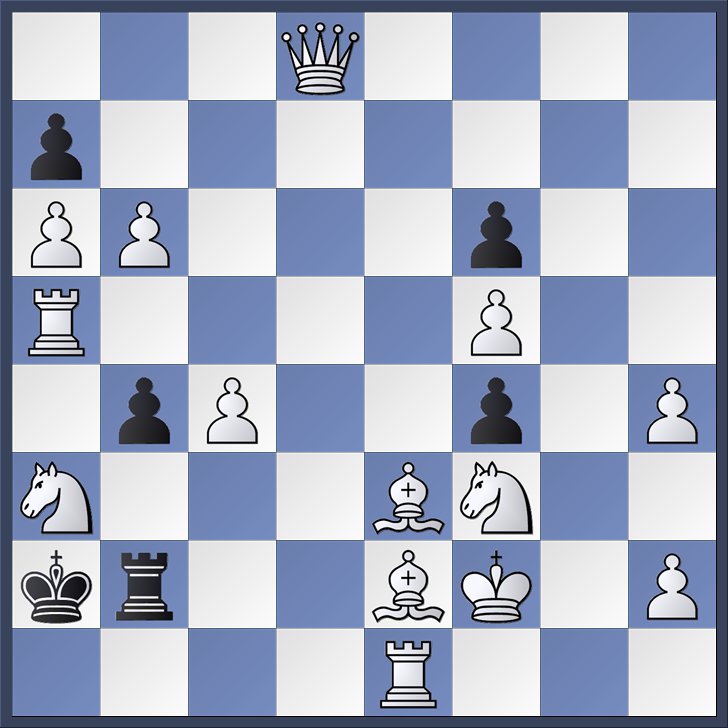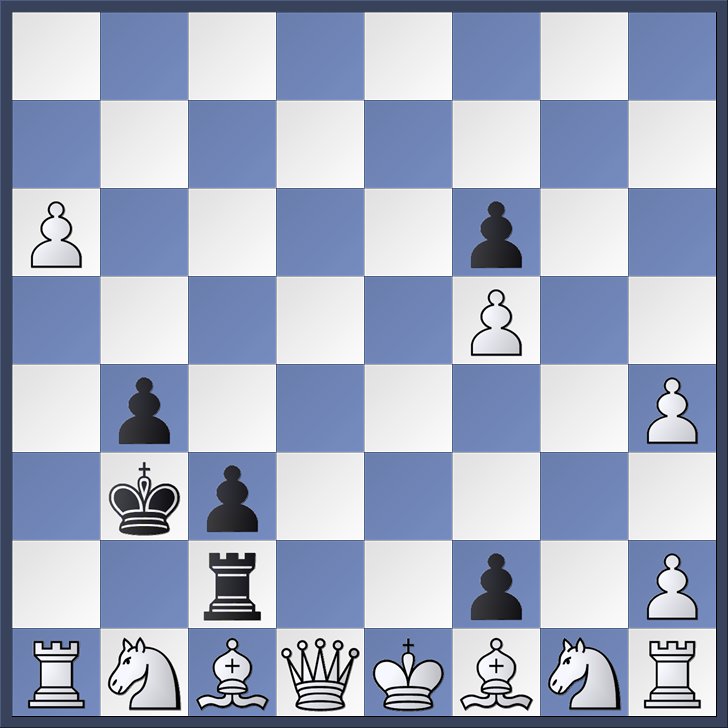Last week we introduced selfmates with a straightforward example that I composed in the late 1980s. This week we feature another representative of this genre. It was created by an American composer named Mark Kirtley, in 1986. In the position below, white is to play and force selfmate in eight moves. (Recall that this means that white will force black to deliver checkmate, while black will do everything in his power to avoid giving mate.)

Recall that the vertical files are labeled a--h from left to right. The horizontal ranks are labeled 1--8 from bottom to top. So, the white king is on f2 and the black king is on a2. White has rooks on a5 and e1, while the black rook is on b2. When writing down moves, captures are always indicated with an “x” while check is indicated with the symbol “+”. White is always moving up the board, and black is always moving down the board.
In many selfmates, the white king starts out with so little mobility that it is not hard to believe that he will be mated in short order. The present example is not like that. The white king is free as a bird in the diagram position. So, the challenge will be for white to create a mating nest for himself while being careful to ensure that the black pieces are carefully controlled.
Towards that end, we immediately notice that the black rook currently has too much freedom. White needs to bring it under control before doing anything else. So, the solution begins with 1. Nb1+ Kb3 2. Qd1+ Rc2, leading to this position:

That's progress, since the black rook is now pinned, but there is still plenty more work to do. For one thing, the black rook won't stay pinned for long if the black king can just move out of the way. So white will have to retreat his bishop to cover the b2 square. But then we have to be a bit careful, since black is close to being stalemated. In fact, his only move at that point will be with his pawn on the a-file. After that pawn captures, the white rook will be attacked. Since its presence is necessary to cover squares on the a-file, it will only have one safe square to move to. So the solution continues with 3. Bc1 axb6 4. Ra1 b5:

Do you see where this is going?
The immediate crisis has passed. Black's pieces are all tied up, and he has two pawn moves in reserve to avoid stalemate. Time to turn our attention to white's mating nest. White will plant his king on e1, he will make sure his shoulders on d1 and f1 are blocked by his own pieces, and then he will wait for a black pawn to arrive on f2. There's only one way to make that happen!
First, the white rook must vacate the e1 square. But if it moves to f1 it will be able to capture any black pawn that lands on f2. It is harder to see why g1 won't do, but notice that the white knight will need to move to free up the black pawn. That means he needs a square to move to, but which square would that be? So, the solution must continue 5. Rh1 bxc4 6. Ke1 c3:

And now for the big finale. At the moment, black is stalemated. So white's next move must be with his knight, to release the pawn on f4. But Where is the knight to go? If it goes to d4 it will give checkmate to black's king. No good! If it moves to d2 it will just get captured, thereby giving black too much freedom. If it goes to e5 or g5 it will be captured by the black pawn on f6, which would again give black too much freedom. That leaves only one possibility. The solution concludes with 7. Ng1 f3 8. Bf1 f2 mate:

Pretty neat, wouldn't you say? Are you really going to complain at this point that chess problems are too far removed from actual play?

Lol, nice problem.
There is a typo immediately before the second diagram. The second Kb3 should be Rc2.
To state the obvious more baldly than Jason (coyly) did, the entire selfmate-in-8 series of moves consists of moving White's eight pieces, one at a time, back to where they started the game.
A wonderful solution which I couldn't have solved in a month of Sundays. (Shockingly, I "solved" the math problem below in less than a minute. Two glances. This is a one-in-a-million event for me and, as Terry Pratchett points out in his book "Hogfather", they're actually pretty likely to happen, eh?)
Jr--
Thanks for catching the error, which I have now corrected.
By the way, where are you going with this series? Are you planning to illustrate many different types of problems?
No specific direction, but, yes, as we go along I will try to illustrate many different genres and themes. I figured it was a nice way of lightening the mood over the weekends.
First time I am seeing this site. I enjoyed the Selfmate illustrating clearly the Dentiist theme!
Hi Mr. Ganapathi. I'm glad you're enjoying the chess problem posts. I've seen quite a few of your problems in The Problemist so I'm glad you stopped by. If you happen to have the May 2009 issue of The Problemist handy and turn to the selfmate award, you'll notice that one of your problems received an honorable mention in the same tourney where one of my problems received a commendation. I haven't been an active composer for a while, but I still read magazines like The Problemist and StrateGems.